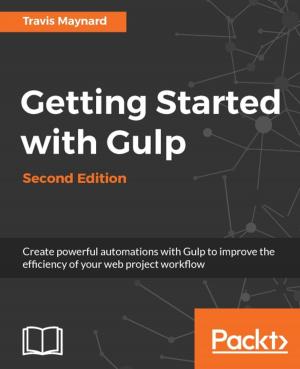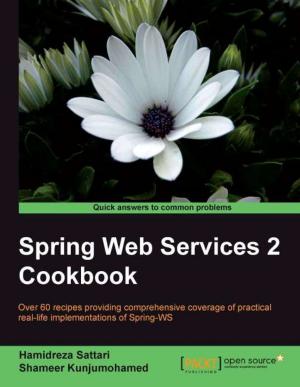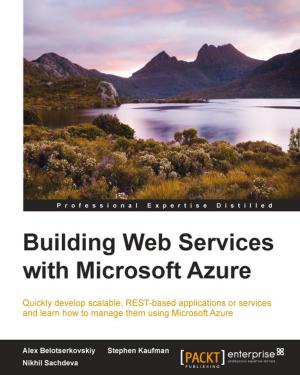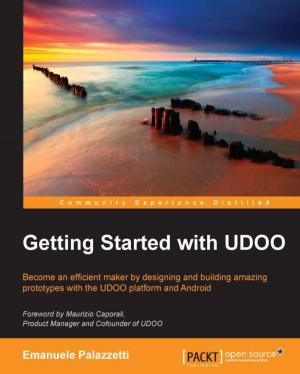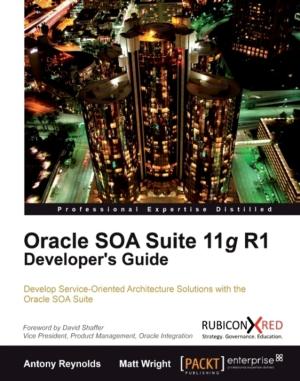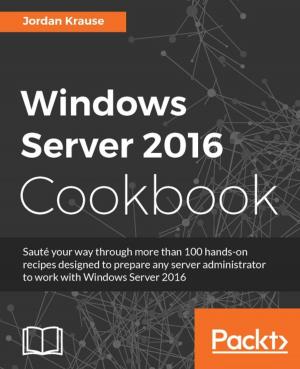Microsoft System Center Orchestrator 2012 R2 Essentials
Nonfiction, Computers, Operating Systems, Windows| Author: | Miguel Oliveira | ISBN: | 9781785287848 |
| Publisher: | Packt Publishing | Publication: | August 7, 2015 |
| Imprint: | Packt Publishing | Language: | English |
| Author: | Miguel Oliveira |
| ISBN: | 9781785287848 |
| Publisher: | Packt Publishing |
| Publication: | August 7, 2015 |
| Imprint: | Packt Publishing |
| Language: | English |
Design, implement, and improve your infrastructure administration with System Center Orchestrator 2012 R2’s automation process
About This Book
- Learn about the components of Orchestrator, the design and implementation process, and the way it interacts with your environment to create outstanding automation processes
- Gain an in-depth understanding of Runbooks, while exploring its security and troubleshooting aspects
- Follow this step-by-step guide at your own pace and get yourself in the frontline of the Orchestrator world
Who This Book Is For
This book is targeted for those who want to gain time in their administrative tasks and profit from it to improve also their environment by reaching a more autonomous infrastructure. Experience with other System Center family products as well as Active Directory and other core datacentre components would be useful to help you understand and execute the information given in this book.
What You Will Learn
- Plan, assess, design, and implement Orchestrator 2012 R2 in a corporate environment
- Master the Runbook Designer and discover all about the Runbook creation process
- Import and integrate more technologies through new imported functionalities and learn what they bring to your environment
- Extend your possibilities and interaction with your environment while you get a hand of the best practices for this system
- Implement high-availability, security, backup, and recovery procedures and fine-tuning of the platform
- Familiarize yourself with the Runbook design and its implementation with an insight into the methodology for a more dynamic Datacenter
In Detail
With the increasing complexity of systems in our infrastructure designs, administrating these systems has become more complex and repetitive. This ultimately translates into an inefficient environment and loss of time. System Center Orchestrator 2012 R2 is the tool that can help you regain that time again, by simplifying repetitive tasks (or complex ones) into a simple one that will require minimum intervention from you, or even none.
This technology will drive you one step forward towards a more dynamic infrastructure and can also be used to make a customized Private Cloud environment setup.
Starting off with the fundamentals of Orchestrator, this book helps you to learn the configuration and deployment of the Orchestrator 2012 R2 in a corporate environment to successfully deploy and mitigate real-life issues that you might encounter. You’ll learn the most used part of Orchestrator, the Runbook Designer, with all its components and mechanisms to help you efficiently design and implement your Runbooks from top to bottom. Additionally, you will also get familiarized with configuring key Integration Packs available for Orchestrator to extend its functionality and enhance the automation solution.
Furthermore, you will explore the possibilities of extending and integrating Orchestrator with other parties and learn to set up core infrastructure administrative tasks that can save time and effort when automated with Orchestrator. You finally round off by gaining insights on the maintenance aspects of Orchestrator, while simultaneously covering the troubleshooting, backup, and recovery features.
Style and approach
Written in a step-by-step guide format, the chapters are organized in a sequence of what you need to know first to move on to the next component. Each chapter contains a broad explanation of what we are working on at that moment and the tips provided are based on real-world experience.
Design, implement, and improve your infrastructure administration with System Center Orchestrator 2012 R2’s automation process
About This Book
- Learn about the components of Orchestrator, the design and implementation process, and the way it interacts with your environment to create outstanding automation processes
- Gain an in-depth understanding of Runbooks, while exploring its security and troubleshooting aspects
- Follow this step-by-step guide at your own pace and get yourself in the frontline of the Orchestrator world
Who This Book Is For
This book is targeted for those who want to gain time in their administrative tasks and profit from it to improve also their environment by reaching a more autonomous infrastructure. Experience with other System Center family products as well as Active Directory and other core datacentre components would be useful to help you understand and execute the information given in this book.
What You Will Learn
- Plan, assess, design, and implement Orchestrator 2012 R2 in a corporate environment
- Master the Runbook Designer and discover all about the Runbook creation process
- Import and integrate more technologies through new imported functionalities and learn what they bring to your environment
- Extend your possibilities and interaction with your environment while you get a hand of the best practices for this system
- Implement high-availability, security, backup, and recovery procedures and fine-tuning of the platform
- Familiarize yourself with the Runbook design and its implementation with an insight into the methodology for a more dynamic Datacenter
In Detail
With the increasing complexity of systems in our infrastructure designs, administrating these systems has become more complex and repetitive. This ultimately translates into an inefficient environment and loss of time. System Center Orchestrator 2012 R2 is the tool that can help you regain that time again, by simplifying repetitive tasks (or complex ones) into a simple one that will require minimum intervention from you, or even none.
This technology will drive you one step forward towards a more dynamic infrastructure and can also be used to make a customized Private Cloud environment setup.
Starting off with the fundamentals of Orchestrator, this book helps you to learn the configuration and deployment of the Orchestrator 2012 R2 in a corporate environment to successfully deploy and mitigate real-life issues that you might encounter. You’ll learn the most used part of Orchestrator, the Runbook Designer, with all its components and mechanisms to help you efficiently design and implement your Runbooks from top to bottom. Additionally, you will also get familiarized with configuring key Integration Packs available for Orchestrator to extend its functionality and enhance the automation solution.
Furthermore, you will explore the possibilities of extending and integrating Orchestrator with other parties and learn to set up core infrastructure administrative tasks that can save time and effort when automated with Orchestrator. You finally round off by gaining insights on the maintenance aspects of Orchestrator, while simultaneously covering the troubleshooting, backup, and recovery features.
Style and approach
Written in a step-by-step guide format, the chapters are organized in a sequence of what you need to know first to move on to the next component. Each chapter contains a broad explanation of what we are working on at that moment and the tips provided are based on real-world experience.


